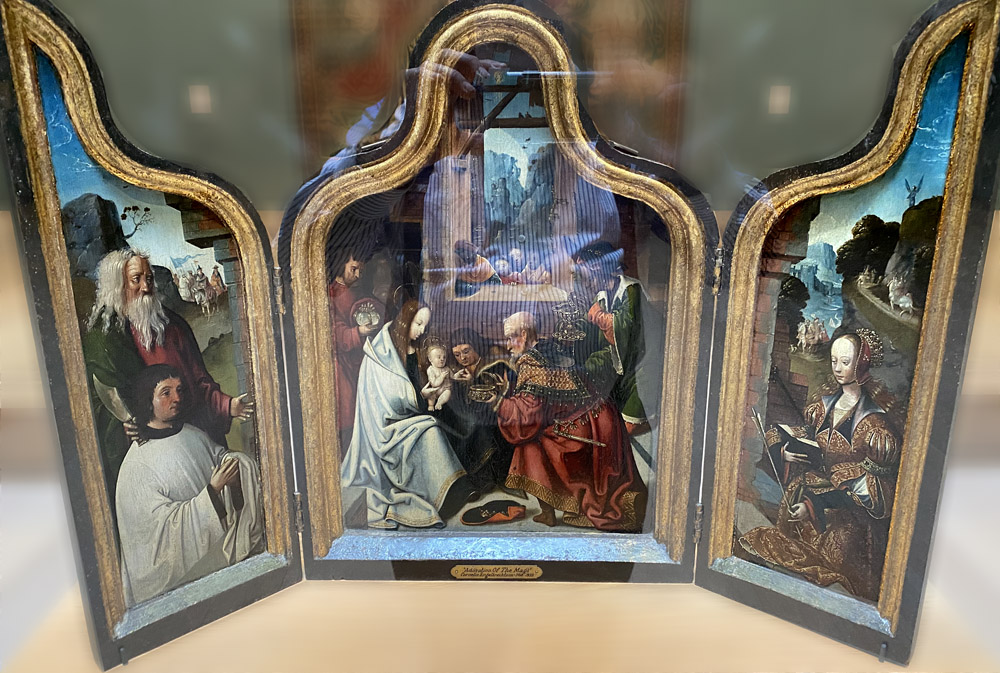Cornelis Engebrechtsz, The Adoration of the Magi

Circa 1529
Oil on panel
Norton Simon Museum, Pasadena, California
As in many other images of this period, the Magi are pictured as representing both the three ages of man and the range of races on earth, with a dark-skinned African standing on the right and an elderly European in the foreground. The children at the window are also ethnically diverse: an older one with very dark skin on the left, a younger child with skin less dark on the right, and two European children in-between.
The baby's nakedness is a feature inherited from the 15th century. After the early 16th more and more images would hide the genitals from view by means of a wisp of cloth or Mary's hand.
In an interesting variation on the gifts, the gold that the youngest mage gives the child is in the form of a ring for his finger.
On the left wing, St. Bartholomew holds the flaying knife that is his attribute. He appears to be presenting the young acolyte, who is not identified, to the holy family. In the background a troop of horsemen approaches. These are most likely the "thousand men armed" that the Golden Legend says King Astarges sent to arrest the saint.
On the right wing, St. Ursula's attribute is the arrow she holds in her left hand. The man on horseback pictured twice in the background may be her fiancé Ethereus, who traveled to Cologne to join her in martyrdom. Or he could be the "prince of the Huns" who proposed to Ursula and killed her when she refused. This is less likely, but it would make an appropriate counterpart for the horsemen of Astarges pictured on the left wing.
View this image in full resolution.
View the left wing in full resolution.
View the right wing in full resolution.
Read more about images of the Magi.
Read more about images of St. Bartholomew.
Read more about images of St. Ursula.
Photographed at the site by Richard Stracke, shared under Attribution-NonCommercial-ShareAlike license.